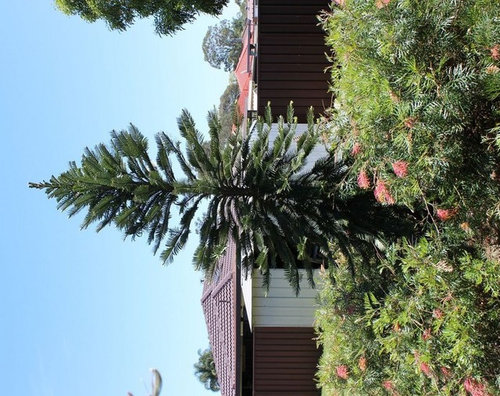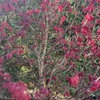Woolemi Pine
thefof Zone 8/9 UK
9 years ago
Guys
Prior to their release to the commercial market, I know that specimens were distributed to Botanical Gardens around the world.
Do any of you know how these went? Did they survive? Are they thriving?
Here is picture of mine, which is now close to 4m tall. You can just see the new apple green foliage breaking out of the polar bodies on the tip of each branch.
The crown decided to bifurcate last year but it isn't too obvious at the moment. There are 2 new trunks starting from the base, the largest is now about 1/2m tall.






sam_md
thefof Zone 8/9 UKOriginal Author
Related Professionals
Salisbury Landscape Architects & Landscape Designers · Roxbury Crossing Landscape Architects & Landscape Designers · East Chicago Landscape Contractors · Essex Landscape Contractors · Los Banos Landscape Contractors · Midland Landscape Contractors · Round Lake Landscape Contractors · The Villages Landscape Contractors · Thornton Landscape Contractors · Guilford Siding & Exteriors · Kenosha Siding & Exteriors · Linden Siding & Exteriors · Waldorf Siding & Exteriors · Fort Lee Decks, Patios & Outdoor Enclosures · Surfside Decks, Patios & Outdoor EnclosuresgardenprincethenetherlandsZ7/8
davidrt28 (zone 7)
shaxhome (Frog Rock, Australia 9b)
hoovb zone 9 sunset 23
Embothrium
davidrt28 (zone 7)
davidrt28 (zone 7)
Embothrium
davidrt28 (zone 7)
shaxhome (Frog Rock, Australia 9b)
floral_uk z.8/9 SW UK
davidrt28 (zone 7)
thefof Zone 8/9 UKOriginal Author
thefof Zone 8/9 UKOriginal Author
davidrt28 (zone 7)
thefof Zone 8/9 UKOriginal Author
thefof Zone 8/9 UKOriginal Author